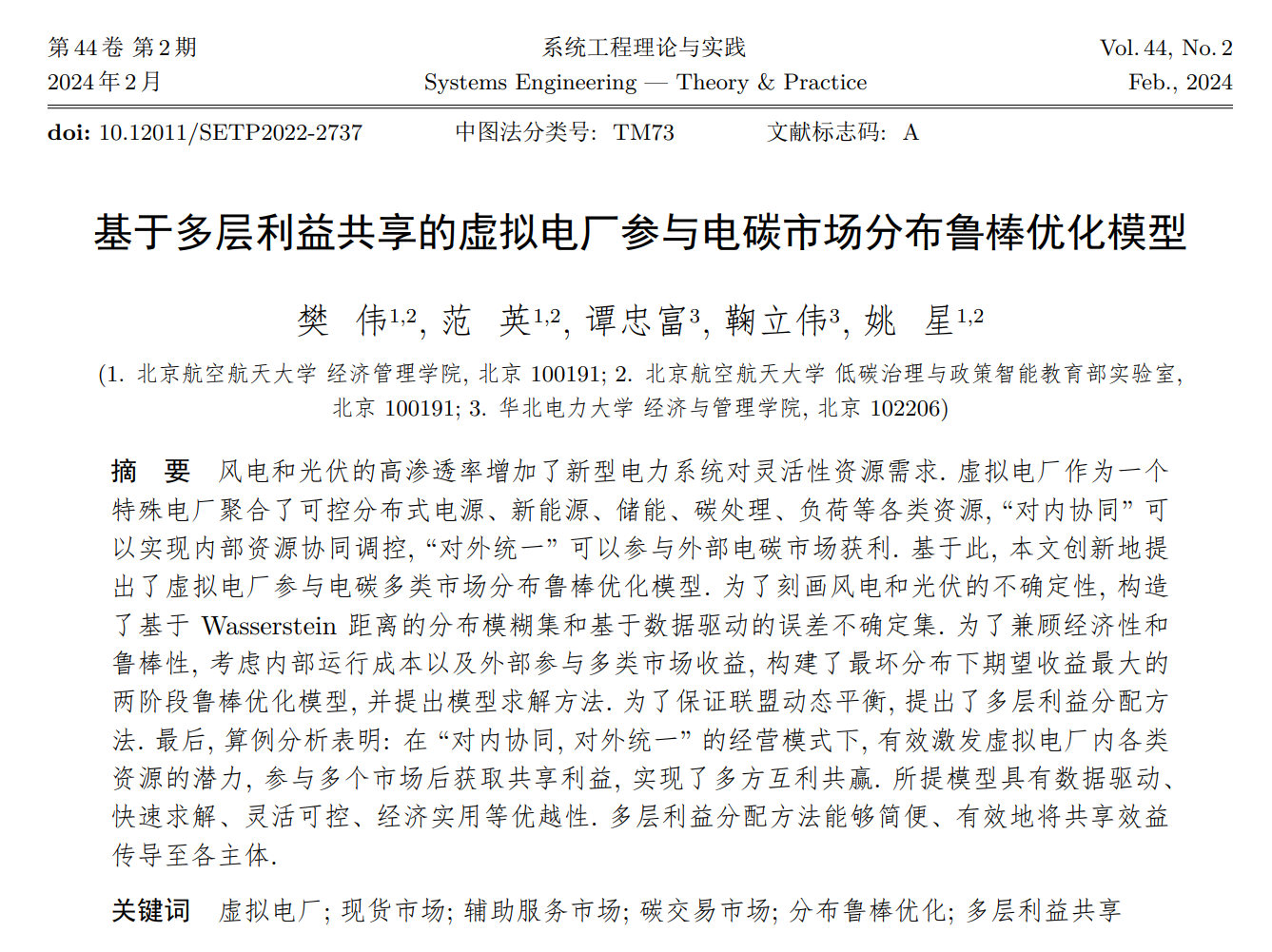
Basic Information
Title: Distributionally robust optimization model for virtual power plant participation in electricity carbon market based on multi-layer benefit sharing
Author(s): FAN Wei, FAN Ying, TAN Zhongfu, JU Liwei, YAO Xing
Journal: 系统工程理论与实践
Published: 2023.10
DOI:https://link.cnki.net/urlid/11.2267.N.20231009.1545.010
Abstract
The high penetration of wind and PV increases the demand for flexible resources in new power systems. As a special power plant, virtual power plant integrates all kinds of resources such as controllable distributed power supply, new energy, energy storage, carbon treatment and load. “Internal collaboration” can realize collaborative regulation of internal resources, and “external unity” can participate in the external electric carbon market for profit. Based on this, this paper innovatively proposes a distributionally robust optimization model for virtual power plants to participate in multi-class electric carbon markets. In order to describe the uncertainty of wind power and PV, the distributed fuzzy set based on Wasserstein distance and the error uncertainty set based on data-driven are constructed. In order to consider both economy and robustness, a two-stage robust optimization model with maximum expected revenue under the worst-case distribution is constructed by considering the internal operating costs and the benefits of external participation in multi-category markets, and the solution method of the model is proposed. In order to ensure the dynamic balance of the alliance, a multi-layer benefit sharing method is proposed. Finally, the example analysis shows that under the operation mode of “internal coordination and external unification”, the potential of various resources in the virtual power plant is effectively stimulated, and the shared benefits are obtained after participating in multiple markets, and the mutual benefit and win-win situation of various parties is realized. The proposed model has the advantages of data-driven, fast solution, flexible and controllable, economical and practical. The multi-layer benefit sharing method can transmit the shared benefit to each subject simply and effectively.